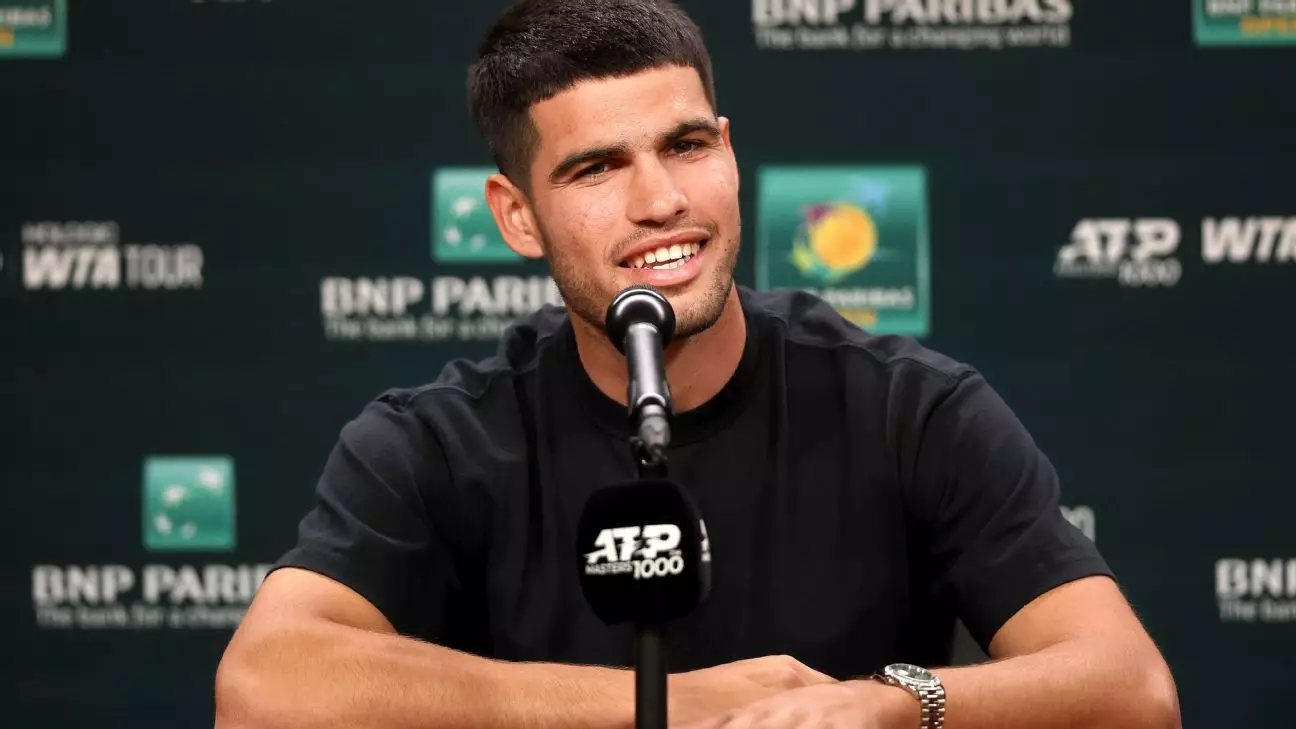In the world of professional sports, few topics ignite passion and conflict like governance. Carlos Alcaraz, the young Spanish tennis prodigy, recently found himself at the epicenter of a looming class-action lawsuit aimed at reshaping tennis management. The suit, driven by the Professional Tennis Players’ Association (PTPA), claims that the organizations governing the sport have formed a “cartel” that stifles player rights and opportunities. Alcaraz’s reaction to the lawsuit, particularly his lack of support for the initiative co-founded by fellow player Novak Djokovic, reveals an intriguing dynamic within the sport. Rather than diving headfirst into the controversy, Alcaraz’s measured response underscores a willingness to evaluate the complexities rather than take sides.
Unforeseen Inclusion and Emotional Responses
Most striking is Alcaraz’s admission that he was caught off guard by the lawsuit, having learned about it through social media. This highlights an alarming sense of disconnection among players who should ideally have a voice in discussions that directly impact their careers. As a rising star and a four-time Grand Slam champion, Alcaraz’s perspective matters significantly; however, his experience illustrates how even top athletes can feel marginalized within their own industry. His inclusion in the lawsuit’s documentation, citing concerns over an overwhelming schedule, also raises questions about transparency and communication among players and leadership entities.
Alcaraz’s comments from a previous press conference about the relentless tournament schedule reflect a genuine concern shared by many athletes. He suggested that the current organizational structure within tennis threatens to “kill” players through an unsustainable demanding calendar. This metaphor, albeit captured in a lighter moment, conveys the heavy strain professional tennis imposes on its athletes.
The Dichotomy of Player Experiences
Interestingly, Alcaraz’s nuanced stance reveals the divided opinions within the player community. On one hand, many athletes advocate for reform and more equitable representations within tennis governance; on the other, some players appreciate the structure as it stands, viewing the abundance of tournaments as opportunities rather than hindrances. This dichotomy underscores a complex reality where personal experience radically shapes perception.
While players like Alcaraz express their unease about overload, their peers may feel inspired by the competition and prestige that comes with numerous tournaments throughout the season. This complicates the narrative and raises important questions: What is the right balance between competition and sustainable player welfare? Moreover, how can the structures governing tennis evolve while accommodating the diverse needs of its athletes?
A Future of Dialogue and Change
It’s clear that the conversation around governance in tennis is only just beginning. Alcaraz’s reluctance to fully endorse the class action, coupled with his candid remarks on the sport’s rigorous demand, presents an opportunity for dialogue; a chance to reassess the foundational policies that govern not just competition, but the well-being of the players who drive the sport forward. With figures like Alcaraz at the forefront, the potential for constructive change remains alive—if only all voices in the arena could be harmoniously integrated into the conversation.
As the tennis world watches and listens, one thing is certain: navigating the future demands genuine engagement, from both players and governing bodies, in pursuit of a balanced system that honors the dedication of its athletes. The outcome could redefine not just the rules of play but the very fabric of professional tennis itself.

